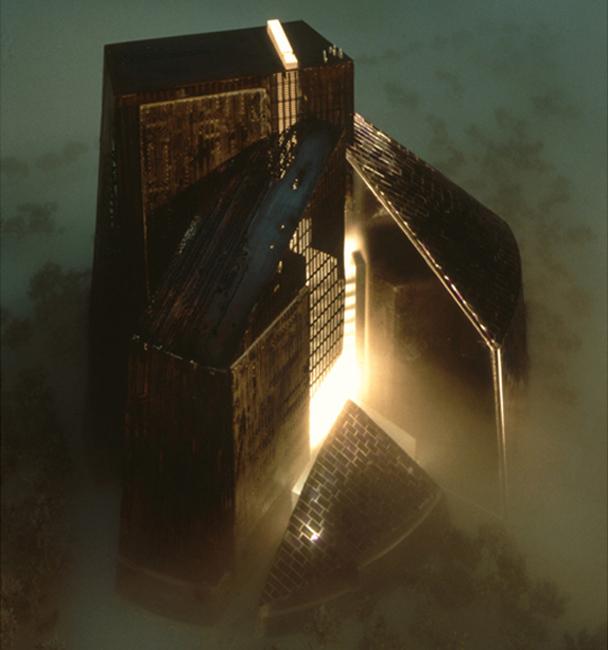
 |
|
|
National Archive of Denmark Copenhagen, Denmark
Here, the Danish National Archive is conceived as a fortress of memory. Symbolizing the roots of the tree of knowledge, it is to be at the beginning of any inquiry which contributes to an understanding of the foundations of Danish culture. Like archives in the work of Jorge Luis Borges, it is seen to signify infinite memory. However, in the spirit of Soren Kierkegaard, it is also understood that poetic memory is to forget. The archive stands as an accessible fortress which protects against the loss of the past. Its architecture is created by cleaving the enormous storage volume of strong rooms into runes — ancient tablets. These great masses or towers express the monumental weight of this nation’s history. Silhouetted against the sky and the horizon, the National Archive will be visible from Copenhagen and Sweden. Many different forms and changing face appear, depending upon the particular angle the archive is seen from. During the day there are views entirely through the building: between the heavy cores of the tablets are glimpses of the green expanse of Amager Commons and blue sky; in the evening, the building changes character — light is seen from the distance, seeping out into the wedges between the tablets. The archive becomes a beacon in the urban expanse of Copenhagen. The internal spaces offer up a plethora of experiences for the visitor. The most public areas, such as an entrance lobby and greenhouse, are bathed in sunlight while the light in the reading rooms is soft and diffused. On entry, visitors are invited to ascend into the archive via a monumental stair or by glass elevator, both adjacent to the information desk. The main stair and glass elevator land near the service desk on the second floor. From this point opens a panorama over Amager Commons to the west: a dynamic view for readers to contemplate as they wait for documents. |
|
||
| |